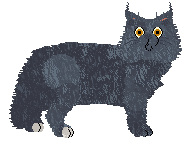The Siberian, Russia’s native forest cat, first appeared in recorded history around the year 1000 and hails from the unforgiving climate of Siberia. This is a cat that nature designed to survive, with no extremes in type. It is the cobbiest of the three forest cat breeds, intended for the coldest climate and harshest winters. A fat pad on the abdomen, referred to as a “famine pouch”, helps them survive the lack of prey in winter. The unique triple coat is extremely dense, with soft downy undercoat tightly packed under thick, coarse guard hairs to trap heat. Although the Siberian was mentioned in nineteenth-century cat books, it was not shown outside of eastern Europe until the end of the Cold War; the first Siberians arrived in the United States in June 1990, and were accepted for championship showing by CFA in 2006.
The Siberian’s coat is actually low-allergenic; studies have shown that Siberians have a gene that causes more than half of purebred Siberians to produce less Fel-d1 allergen than North American random-bred cats, with a significant percentage producing so little that they are considered safe to live with people extremely allergic to cats. Although they are not guaranteed to be hypoallergenic, a Siberian that tests low for Fel-d1 is an excellent choice for a cat lover with allergies.
Type & judging remarks
The Siberian is a medium to medium-large cat, strong and triple-coated with surprising heft for its size. The overall appearance should be one of strength, presence, and alertness with a sweet expression. The general impression is one of roundness and circles rather than rectangles and triangles. The head is broad and short-muzzled, with a heavy body set low on thick legs. Strong colours and clear patterns are desirable.






 in any amount.
in any amount. in any amount.
in any amount.


 dark
dark 




